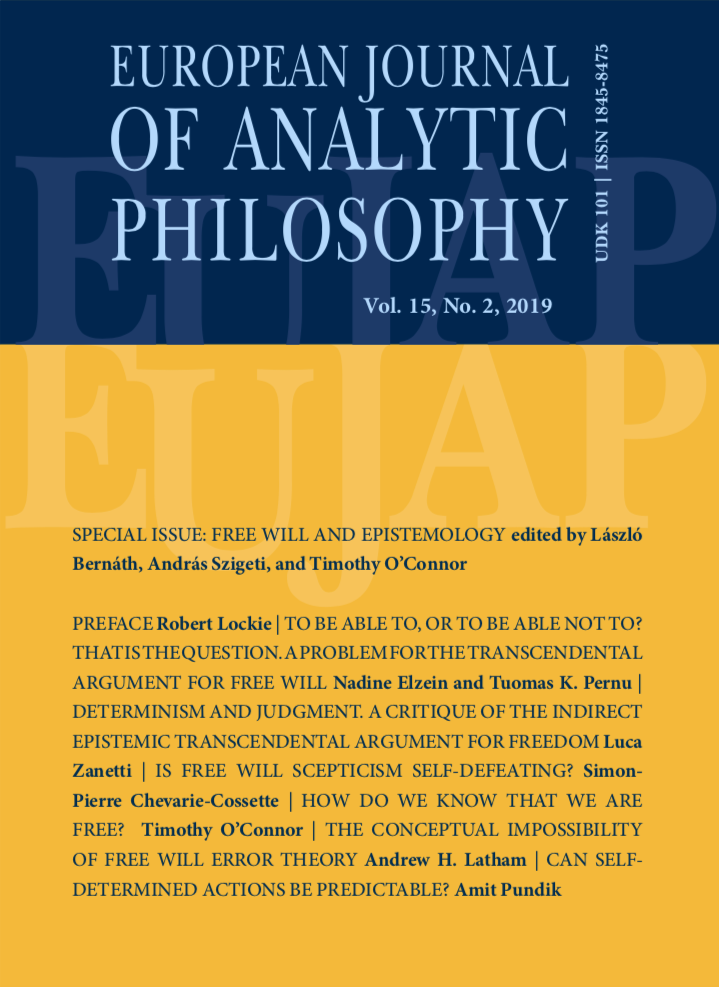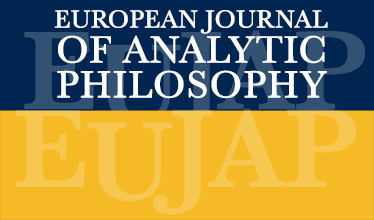BOOK REVIEW
Toril Moi, Rita Felski, and Amanda Anderson, CHARACTER: THREE INQUIRIES IN LITERARY STUDIES, University of Chicago Press, 2019, ISBN-13: 978-0-226-65866 (paper), ISBN-13: 978-0-226-65883-4 (e-book), Hardcover, $60.00, Paperback, $20.00, e-book, $14.01 DOWNLOAD PDF
David Grčki (University of Rijeka, Faculty of Humanities and Social Sciences)
© 2022 David Grčki
In their book Character: Three Inquiries in Literary Studies, Toril Moi, Rita Felski and Amanda Anderson explore new accounts of how we engage with and understand fictional characters. The book consists of an introduction and three separate essays; Rethinking characters (Moi), Identifying with Characters (Felski), and Thinking with characters (Anderson). In the introduction, they state that the goal of the book is not to build a normative theory of engagement with fictional characters but to “clear away some old restriction” and “open up new avenues of inquiry” (22). They argue that modernist-formalist theories that treat fictional characters as “character spaces” and “patterns in the text”––which have dominated literary studies for more than half a century––face serious problems. There is a value, they say, in understanding how laymen engage with fictional characters––by connecting with them on a personal and emotional level. Each author argues for these two points in a unique way.
In the first essay, Moi investigates “the origins of the taboo” of treating characters as real people, tracing it back to L. C. Knights’s 1933 essay “How many children had Lady Macbeth?”. Influenced by Russian and Czech formalists, L. C. Knights argues that fictional characters are “not our friends for life” and are not “as real as our familiar friends” (28). According to L. C. Knights, fictional characters “exist only as words on a printed page”, “they have no consciousness” and “feeling that they are living people is an illusion” (28) and we should treat them as “patterns in the text” and abstractions. He attacks the idea that Shakespeare was the creator of characters (which was influential at the time) and argues that Shakespeare was primarily a poet and that we should focus our analysis on Shakespeare’s “rhythm and imagery” and “quality of the verse” (36). Moi argues that L. C. Knights has “professional and aesthetic agenda” (30, 40)––the defence of modernism. His agenda is to criticize “traditionalist, feminized, middlebrow sentimentality” and to replace it with “cool, modernist, impersonality” (43). Moi claims that, L. C. Knights’s position fails as a coherent philosophical argument because there is no reason why we can’t have character analysis and formal analysis when discussing a narrative work of art. The problem, according to Moi, is not just that L. C. Knights is wrong, but that his ideas are now dogma in literary criticism. Approach to character analysis inspired by L. C. Knights’s work (modernist-formalist approach) is now the norm and treating characters as real people is something that only uneducated laymen do.
In the next section of her essay, Moi analyses John Frow’s Character and Person (2014) and takes it as evidence that Knights’s dogma is alive even today. Frow argues that a fictional character is a “complex concept of form” (49) and that we should analyse it as having two distinct ontological senses: “pieces of writing or imagining and person like entities” (51). He argues that there is something miraculous about engaging with pieces of writing or imagining as person like entities. Moi argues that there is nothing miraculous at play here. We often talk about fictive characters in much the same way we talk about real people, and we emotionally engage with them in a similar manner. According to Moi, Frow has created a pseudoproblem which stems from his post-Saussurean theoretical framework which is neither helpful nor useful for understanding fictional characters. Moi concludes by reiterating the dangers of succumbing to modernist-formalist framework of character engagement.
In the second essay, Felski explores the notion of identifying with fictional characters, stating that identification is “a sense of affinity or shared response” with a fictional character which can be “ironic as well as sentimental, ethical as well as emotional” and is “a default rather than an option; a feature, not a bug” (77). Like Moi, Felski frowns upon the idea that identification is something that only uneducated readers and viewers do. Identification, according to Felski, is a useful tool in explaining how we engage with fictional characters, and it offers us a way to account for our engagement with a wide array of fictional characters. From Emma Bovary with whom we identify based on an affinity and commonalities we share with her to characters like hobbits and rabbits with whom we identify more metaphorically than literally. Inspired by Murray Smith (1995), Felski argues that there are four strands of identification: alignment, allegiance, recognition, and empathy. Alignment is reader’s or viewer’s access to the character––the character point of view (or perspective) that the audience gets from a particular character in a narrative. Allegiance explains in which way audience identifies with a fictional character through shared ethical and political values. Recognition, as the most basic form of identification, amounts to audience’s visual perception of characters as human figures through perceptual cues––body, face and voice. The last part of identification is empathy––“sharing someone’s feelings and responding with concern to those feelings” (105).
Felski offers two more ideas: “character as Umwelt” and “ironic identification”. According to Felski, one of the reasons why the modernist-formalist approach to understanding fictional characters fails is because fictional characters are not constrained by the work they originated from. Fictional characters move from literature to movie and from movie to graphic novel via adaptation. They live in various fan fictions, they survive by “teleporting into new media” (88) through accessories, trademarks, and sayings. Felski calls this possibility of character transformation “character as Umwelt”. Ironic identification is Felski’s solution to the problem of antiheroes. The problem of antiheroes states that there is an explanatory gap in how we understand and engage with fictional characters that we do not empathize with, sympathize with or share ethical or moral values with. Felski uses Camus’s Meursault and Dostoevsky’s Underground Man as examples of antiheroes. She argues that we identify with those characters through irony. She states that, contrary to standard belief, irony and identification are not mutually exclusive. Ironic identification enables us to share a sense of estrangement and disassociation with those characters. According to Felski, “what is common is an experience of having nothing in common with others, of feeling at odds with the mainstream of social life” (113). Felski concludes by saying that there are various kinds of engagements with fictions and that identification with characters is the driving force behind them.
In the third essay, Anderson explores the importance of character’s moral experience, moral thinking, and inner life. As Moi and Felski, Anderson argues that modernist-formalist approach to character engagement is deeply flawed and points to the works of John Frow (2014) and Alex Woloch (2003) as contemporary examples. The reason for this is because they fail to acknowledge the way in which “novels uniquely present forms of moral experience” and “interior moral reflection as it is extended across time” (130, 131). To make her point she uses the concept of “rumination”––a term borrowed from cognitive-behavioural psychology which describes person’s obsessive and circular thinking, typically seen as pathological. It is a state of distress usually associated with worry, anxiety, and similar negative emotional states. Anderson argues that rumination can be seen in a positive light, as a form of moral thinking and moral justification. In this sense, rumination is more akin to contemplation or reflection, but is not reducible to them. She acknowledges that rumination, in its productive form, “cannot be easily captured” (136). According to Anderson, we can learn a lot about moral clarification, moral epiphany and how we make moral decisions by understanding “extended periods of anguished reflection and elusive processes of grief and healing” (138). In order to do so, in literary context, we need to give centrality to the presentation of character. Anderson uses Eliot’s reference to rumination in Middlemarch and analysis of rumination in Trollope’s The Last Chronicle of Barset and Woolf’s Mrs. Dalloway to make her point. Anderson concludes by saying that “analysis of rumination will allow us to better account for both moral dimension of fiction and the forms of thinking that characterize moral and political life more broadly” (166). To do this successfully, we need to give more attention to the analysis of fictional characters.
To conclude, this is a passionate and highly engaging book. Each author offers her unique perspective on the issue of understanding and engaging with fictional characters. Although their perspectives are different, their argumentations do not collide but supplement each other. Their accounts are relevant not only for literary studies but also for the philosophy of literature and aesthetics. This book will be interesting to experts investigating how we engage with fictional characters as well as to novices who are just curious about it.
Acknowledgments
This work has been supported in part by Croatian Science Foundation under the project number UIP-2020-02-1309.


